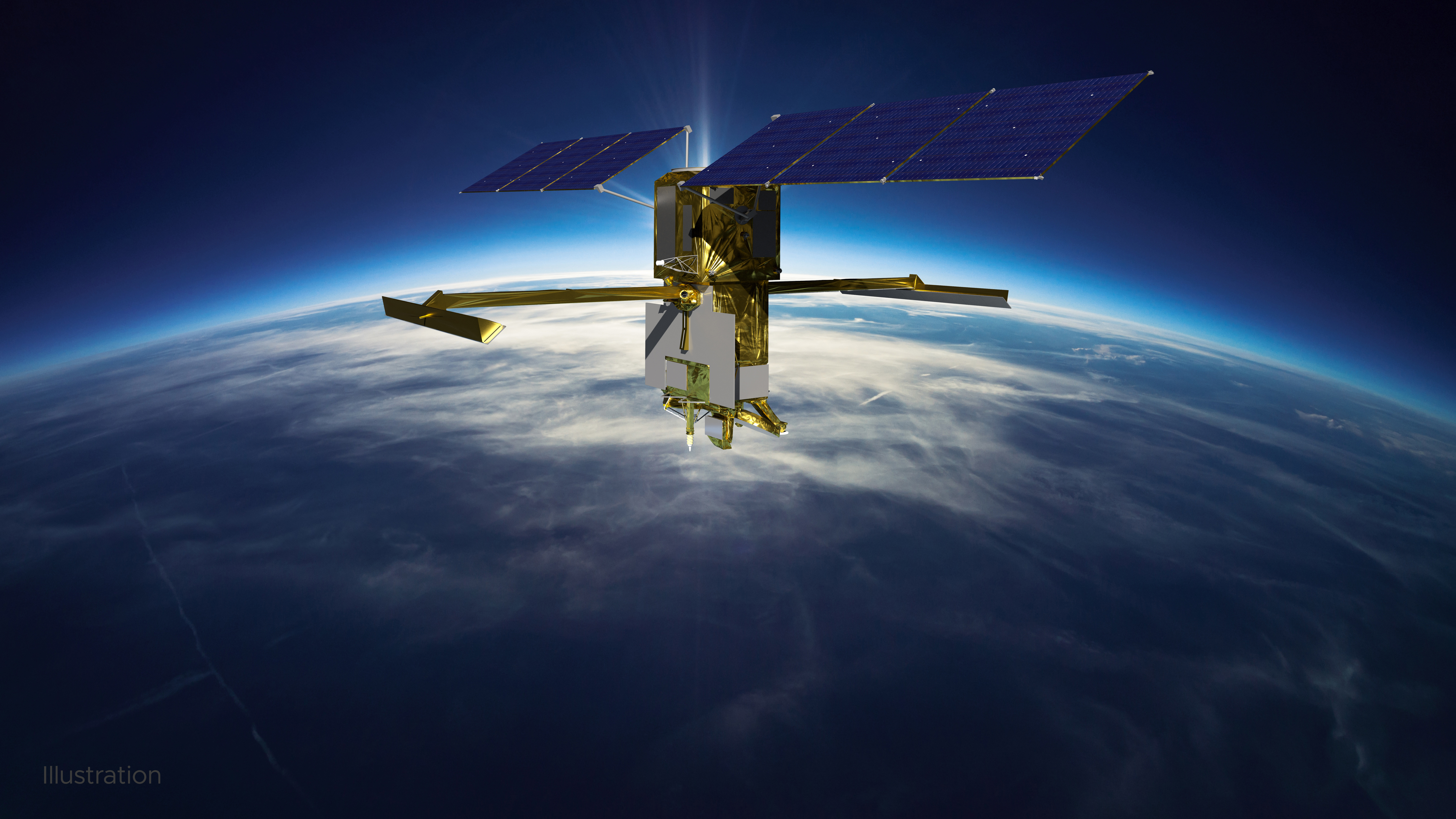SpaceX rocket issue delays launch of NASA SWOT water-watching satellite to Dec. 16

SpaceX has delayed the launch of a NASA water-monitoring satellite to Friday (Dec. 16) to allow more time to investigate an issue with its Falcon 9 rocket.
The Surface Water and Ocean Topography (SWOT) satellite had been scheduled to lift off atop a Falcon 9 on Thursday (Dec. 15) at 6:46 a.m. EST (1146 GMT). But SpaceX is now targeting a Friday launch, at that same early hour.
"After SpaceX's Falcon 9 rocket went vertical on the pad at Space Launch Complex 4 East (SLC-4E) at Vandenberg Space Force Base in California, teams identified moisture in two Merlin engines on the rocket's first stage booster," NASA officials wrote in a brief update on Wednesday night (Dec. 14).
"Teams completed inspections of the rocket's engines today but will use the additional time to complete data reviews and analysis before a launch attempt," they added.
Related: 10 devastating signs of climate change satellites can see from space
It's possible that the moisture detected in the two engines is water, given that a storm roared through the Vandenberg area a few days ago. If that's the case, Friday is a realistic launch target.
If it's something else — propellant, for example — there will be probably a longer delay.
Breaking space news, the latest updates on rocket launches, skywatching events and more!
"Likely, if it is something other than water, we would need to stand down on the launch and remove and replace those engines to ensure that we launch reliably," Julianna Scheiman, civil satellite missions director at SpaceX, said during a prelaunch press conference on Wednesday afternoon.
The Falcon 9 is powered by nine Merlin engines in its first stage (hence the rocket's name). The two-stage rocket's upper stage sports a single Merlin, which is optimized for use in space.
SWOT is a join effort of NASA and the French space agency CNES, with contributions from the Canadian and U.K. space agencies. Once aloft, the satellite will measure water levels of lakes, rivers and oceans around the world with unprecedented precision.
The mission's data will give scientists a better understanding of our world's waterways and how they're affected by climate change, among other applications, mission team members have said.
Friday is shaping up to be a very busy day in spaceflight. SpaceX is expected to launch two missions that day in addition to SWOT. Both of the others will lift off from Florida's Space Coast. One will loft a batch of the company's Starlink internet satellites, and the other will send up two satellites for the telecom company SES.
Rocket Lab also is targeting Friday for its first-ever launch from U.S. soil. On that mission, an Electron booster topped with three HawkEye 360 radio-monitoring satellites will launch from NASA's Wallops Flight Facility in Virginia.
Mike Wall is the author of "Out There" (Grand Central Publishing, 2018; illustrated by Karl Tate), a book about the search for alien life. Follow him on Twitter @michaeldwall. Follow us on Twitter @Spacedotcom or Facebook.

Michael Wall is a Senior Space Writer with Space.com and joined the team in 2010. He primarily covers exoplanets, spaceflight and military space, but has been known to dabble in the space art beat. His book about the search for alien life, "Out There," was published on Nov. 13, 2018. Before becoming a science writer, Michael worked as a herpetologist and wildlife biologist. He has a Ph.D. in evolutionary biology from the University of Sydney, Australia, a bachelor's degree from the University of Arizona, and a graduate certificate in science writing from the University of California, Santa Cruz. To find out what his latest project is, you can follow Michael on Twitter.

